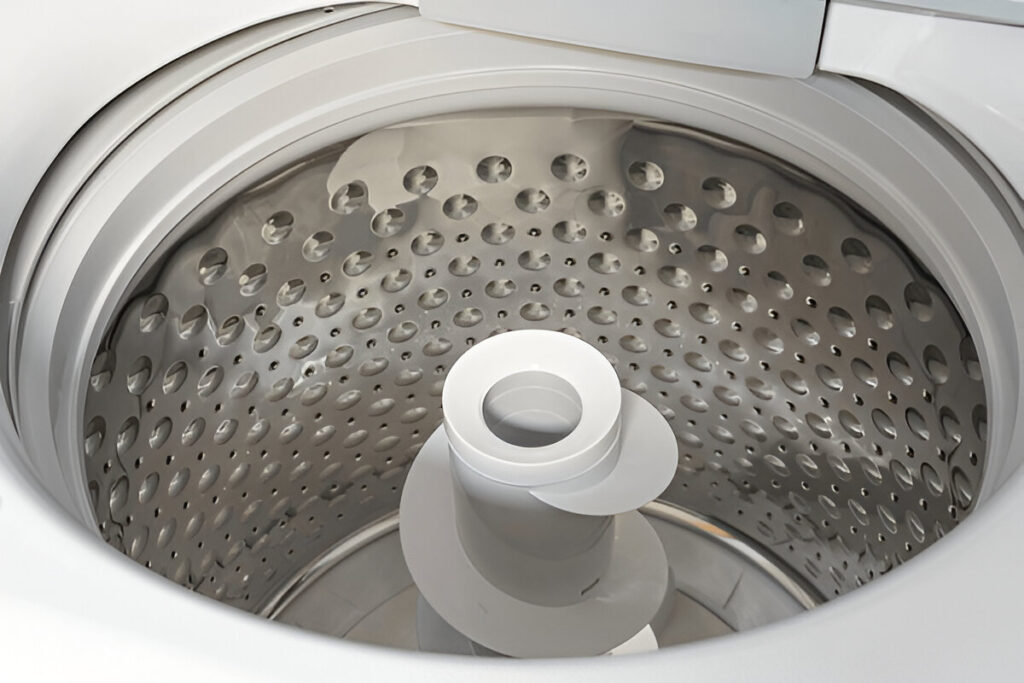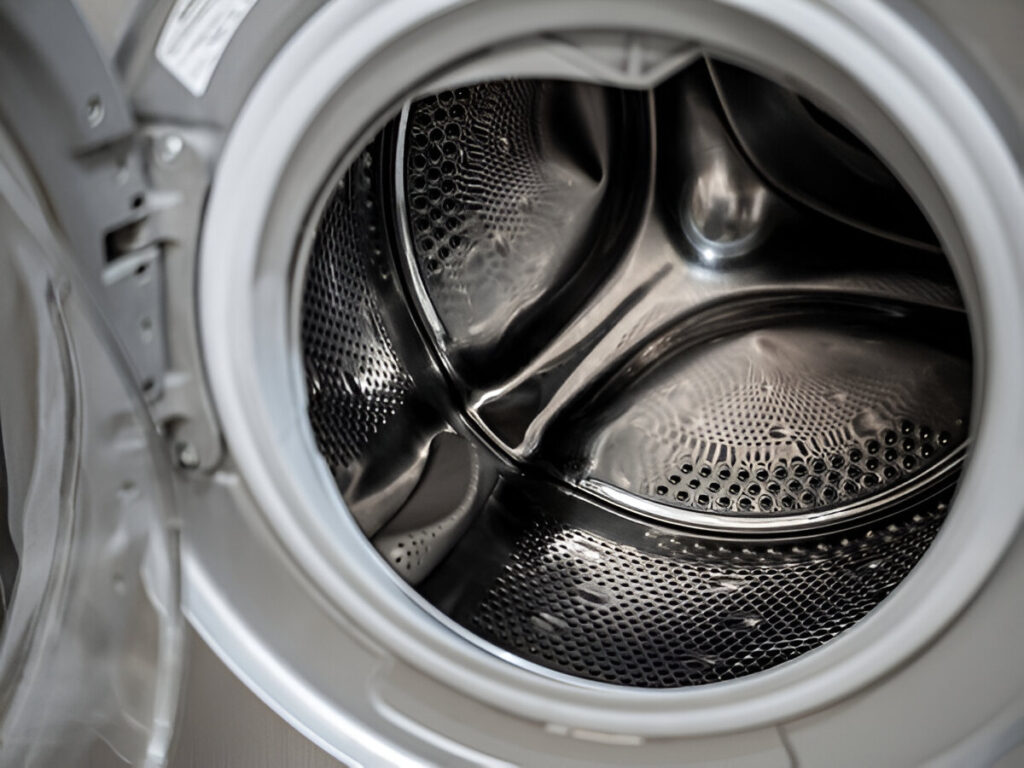
Introduction
Choosing between impeller vs. agitator is crucial for optimizing mixing and fluid handling processes. While both are essential in industries like manufacturing, chemical processing, and wastewater treatment, their designs and functionalities differ significantly. This article highlights the 7 key differences between impellers and agitators to help you select the right equipment for your needs.
What is an Agitator Washer?
An agitator washer is a type of washing machine that utilizes a central post with fins or vanes, known as an agitator, to move clothes through water and detergent, thereby cleaning them. This mechanism is distinct from other types of washing machines, such as pulsator and drum types, which use different methods to achieve the same goal.
Main Components
1. Agitator
- The agitator’s hollow body and radial openings allow water to flow through, creating pressure differences that enhance cleaning. Its movement promotes even distribution of the washing liquid for effective laundry agitation.
2. Washing Basket
- Laundry is placed in the washing basket, with the agitator positioned inside. Together, they ensure thorough cleaning by evenly distributing water and detergent.
3. Motor
- The motor powers the agitator and washing basket, driving their rotating or oscillating movements. A mechanical drive system transfers this power efficiently.
4. Water Supply and Drain Units
- Water is supplied to the basket and drained after each cycle. These units ensure the right mix of water and detergent for optimal cleaning.
5. Controller
- The controller synchronizes the agitator and basket, managing washing, rinsing, and spin-drying cycles for efficient cleaning performance.
6. Suspension System
- This system supports the basket and agitator, reducing vibrations and ensuring stability throughout the washing process.

What is an Impeller Washer?
An impeller washer is a type of washing machine that uses an impeller, a low-profile rotating disc, to move clothes through the water and detergent. This mechanism is distinct from traditional agitator washers, which use a central post with fins to churn the laundry. The impeller washer is designed to create a more gentle and efficient washing process, reducing wear and tear on clothing.
Main Components
1. Impeller
- The impeller, made from durable materials like plastic or stainless steel, features blades that create water flow for effective cleaning. It moves clothes evenly around the drum, ensuring thorough washing.
2. Drum
- The drum, made of stainless steel or plastic, works with the impeller to create the water flow needed for cleaning. It holds the clothes during the wash cycle and withstands high forces.
3. Filtering Cap
- Some models include a filtering cap that directs water into a chamber, separating particles from the wash fluid to enhance efficiency.
4. Mounting Insert
- The impeller attaches to the drum via a secure mounting insert, ensuring stability during operation. This insert resists rotational forces for reliable performance.
5. Motor
- The motor powers both the impeller and drum, driving their movements. Its efficiency directly impacts the washer’s overall performance.
6. Wash Tub
- The wash tub holds the impeller and drum, containing water and detergent during the cycle. Made from corrosion-resistant materials, it ensures durability.
7. Control System
- Modern control systems offer customizable settings, letting users select wash cycles, adjust water levels, and control speed. These features improve efficiency and user convenience.

Impeller vs. Agitator: 7 Key Differences
1. Structural Differences
Impellers:
- Design: Impellers typically consist of a central hub with blades extending radially outward. The blades can be straight, curved, or pitched, depending on the desired flow pattern.
- Construction: Impellers are often a single piece of unitary construction, where the blades are integral with the hub portion.
- Types: Common types include axial flow impellers (propellers), radial flow impellers (turbines), and mixed flow impellers.
Agitators:
- Design: Agitators generally have a more complex structure, including a shaft with various mixing elements such as paddles, turbines, or helical ribbons attached to it.
- Construction: Agitators can have multiple components, such as scraper blades and mixing arms, which are often attached perpendicularly to the shaft.
- Types: Agitators can be categorized into paddle agitators, turbine agitators, and helical ribbon agitators, among others.
2. Functional Differences
Impellers:
- Flow Patterns: Impellers generate specific flow patterns, such as axial, radial, or mixed flow, which are crucial for different mixing applications.
- Efficiency: Impellers are designed to maximize flow and minimize energy consumption. For example, the golden angle impeller has shown a 12.4% increase in power output and a 66.36% increase in flow velocity compared to conventional marine impellers.
Agitators:
- Mixing Mechanism: Agitators provide a more versatile mixing mechanism, capable of handling high-viscosity fluids and creating complex flow patterns, including radial, axial, and tangential flows.
- Efficiency: Agitators are often used in applications requiring thorough mixing and high shear forces. For instance, a reciprocating and rotating-coupled agitator can enhance mixing efficiency by 4.71 times compared to traditional agitators.
3. Performance Metrics
Impellers:
- Power Consumption: Impellers generally consume less power compared to agitators due to their streamlined design and efficient flow patterns.
- Mixing Efficiency: Impellers are highly efficient in creating uniform suspensions and preventing particle accumulation at the bottom of the tank.
Agitators:
- Power Consumption: Agitators may consume more power due to their complex structure and the need to handle high-viscosity fluids.
- Mixing Efficiency: Agitators excel in applications requiring high shear forces and thorough mixing, such as in the production of sand-cement mixtures.
4. Application Suitability
Impellers:
- Low-Viscosity Fluids: Ideal for mixing low-viscosity fluids, such as water and light oils, where efficient flow patterns are crucial.
- Industries: Commonly used in chemical processing, wastewater treatment, and pharmaceutical production.
Agitators:
- High-Viscosity Fluids: Suitable for mixing high-viscosity fluids and creating complex flow patterns necessary for thorough mixing.
- Industries: Widely used in the production of cement, food processing, and bioprocessing systems.
5. Design Flexibility
Impellers:
- Customization: Impellers can be customized in terms of blade angle, size, and shape to optimize flow patterns for specific applications.
- Modularity: Some impellers, such as those used in small volume mixing, can be easily replaced or modified.
Agitators:
- Customization: Agitators offer greater design flexibility with various attachments and configurations to meet specific mixing requirements.
- Modularity: Agitators can be designed with removable and adjustable components, such as scraper blades and mixing arms, to enhance performance.
6. Maintenance and Durability
Impellers:
- Maintenance: Generally require less maintenance due to their simpler design and fewer moving parts.
- Durability: Impellers are durable and can withstand high rotational speeds and continuous operation.
Agitators:
- Maintenance: May require more frequent maintenance due to the complexity of their structure and the presence of multiple moving parts.
- Durability: Agitators are robust and designed to handle high-viscosity fluids and abrasive materials, but may wear out faster under extreme conditions.
7. Cost Considerations
Impellers:
- Initial Cost: Typically have a lower initial cost due to their simpler design and construction.
- Operational Cost: Lower operational costs due to higher energy efficiency and less frequent maintenance.
Agitators:
- Initial Cost: Higher initial cost due to the complexity of their design and the need for multiple components.
- Operational Cost: Higher operational costs due to increased power consumption and maintenance requirements.
FAQs
Do agitator washers damage clothes more than impeller washers?
- Agitator washers can be rougher on fabrics due to their aggressive cleaning action, potentially leading to more wear and tear on clothes over time.
Which type of washer has a larger capacity: agitator or impeller?
- Impeller washers often have a larger capacity because they lack the central post found in agitator models, allowing more room for laundry.
Can I wash bulky items in an impeller washer?
- Yes, the larger capacity of impeller washers makes them suitable for washing bulky items like comforters and blankets.
Which cleans better: agitator or impeller?
- Agitator washers are generally more effective at removing tough stains due to their vigorous motion, whereas impeller washers provide a gentler clean, suitable for delicate fabrics.
To get detailed scientific explanations of Impeller vs. Agitator, try Patsnap Eureka.

